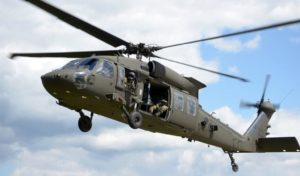The Army is opening a new $6.7 million facility this summer to conduct experiments on rotorcraft drivetrains to help the service study lighter, more efficient transmission systems for its future rotorcraft fleet.
The Vehicle Innovative Powertrain Experimental Research (VIPER) laboratory at Aberdeen Proving Ground in Maryland will feature a 2,000-horsepower transmission testbed that can be configured for experiments simulating UH-60 Black Hawk and AH-64 Apache helicopters, V-22 Osprey tiltrotors and eventually the service’s Future Vertical Lift platforms.
“VIPER will be used to forecast technology development in areas like hybrid gears made of steel and composite materials, and multiple-speed transmissions,” Jaret C. Riddick, director of the Army Research Laboratory’s (ARL) Vehicle Technology Directorate, said in a statement. “These efforts ultimately align with the performance goals embedded within the Army’s Future Vertical Lift modernization priority.”
Technology development at VIPER will focus on exploring capabilities “to increase power density and transmission efficiency to enable greater speed, range and payload for future rotorcraft,” according to the Army.
The Army said the VIPER lab’s in-house testbed will allow researchers to inform future drivetrain requirements without having to rely on data gathered from aircraft health-monitoring systems, which are only able to provide analysis on undamaged components.
“VIPER lab will allow us to perform experiments on helicopter transmissions to generate data and fundamental knowledge that doesn’t exist anywhere else. The validated models and diagnostic tools we are developing will lead to lighter transmissions,” Dr. Ryan Emerson, chief of ARL’s propulsion division, said in a statement. “Every pound of weight we pull out of a helicopter platform enables another pound of sensors or Soldier payload, and improves combat maneuverability and endurance.”